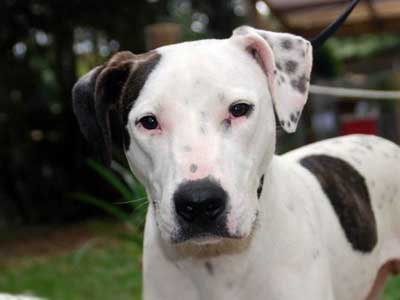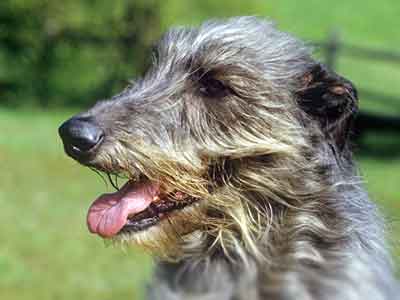American Staghound
Breed Information |
|
|---|---|
| Popularity |
2022: # 2021: # 2020: # 2019: # 2018: # 2017: # 2016: # 2015: # |
| Name | American Staghound |
| Other names | Staghound |
| Origin |  United States United States |
| Breed Group | Hound |
| Size | Large |
| Type | Purebred |
| Life span | 10-12 years |
| Temperament |
Affectionate Courageous Calm Tenacious |
| Height |
Male: 26-32 inches (66-81 cm) Female: 24-29 inches (61-74 cm) |
| Weight |
Male: 55-90 pounds (25-41 kg) Female: 45-85 pounds (20-39 kg) |
| Colors |
Black Blue Brindle Brown White Yellow |
| Litter Size | 3-5 puppies |
| Puppy Prices |
Average (Unknown)
|
Breed Characteristics |
|
|---|---|
| Adaptability |
3 stars |
| Apartment Friendly |
1 stars Not an apartment dog, but can do well in an urban setting if given time to exercise in a fenced-in yard or taken on walks. Best suited for rural areas. The shag variety can acclimate to harsh winter conditions, while the slick requires extra attention during cold winters. Most are kept outdoors, but all prefer the comforts of living in the home. |
| Barking Tendencies |
3 stars Occassional |
| Cat Friendly |
3 stars |
| Child Friendly |
4 stars Good with Kids: American Staghounds are typically excellent with children. As with all dogs, American Staghound puppies should be properly socialized. |
| Dog Friendly |
3 stars |
| Exercise Needs |
3 stars The Staghound requires daily exercise to mature physically and mentally. It lives to run and should have a place to run free. The Staghound would be a perfect companion for a person who jogs or rides a bike often, assuming the dog is over 12months. Do not overwork dogs that are 12months and under as their bones are still developing. Daily pack walks are essential to satisfy the instincts of any canine. |
| Grooming |
1 stars Just a periodic brushing from time to time, depending on type of coat. |
| Health Issues |
2 stars Hypoallergenic: Unknown |
| Intelligence |
3 stars Ranking: (N/A) Full Ranking List |
| Playfulness |
3 stars |
| Shedding Level |
3 stars Moderate Shedding: Routine brushing will help. Be prepared to vacuum often! |
| Stranger Friendly |
3 stars |
| Trainability |
2 stars Difficult Training: The American Staghound responds well to gentle, consistent and patient training. |
| Watchdog Ability |
3 stars |
American Staghound Names |
||
|---|---|---|
| Rank | Boy Names | Girl Names |
| 01 | Charlie | Molly |
| 02 | Riley | Bella |
| 03 | Toby | Coco |
| 04 | Louie | Lady |
| 05 | Ollie | Lola |
| 06 | Milo | Maggie |
| 07 | Oliver | Zoey |
| 08 | Leo | Luna |
| 09 | Moose | Zoey |
| 10 | Loki | Penny |
| 100 Cute Puppy Names › | ||
Overview |
|---|
|
The American Staghound is not recognized as a breed, but is a type of sighthound that is used to pursue (course) a variety of quarry (game). Although it is not recognized as a breed, some "lines" have been bred together longer than some recognized modern breeds. The best way to visualize the American Staghound is to blend together the characteristics of the Scottish Deerhound with the Greyhound. This is a running dog with the physical characteristics that would be referred to as the Greyhound prototype. It has long legs, a deep chest and strong muscles. The Staghound has great visual acuity, and some have been bred for some scenting ability while on course. It can be found in any assortment of color or color patterns that can be found on the Greyhound and Scottish Deerhound. There are three coat types: the "shag," which more closely resembles the Scottish Deerhound; the "slick," which more closely resembles the Greyhound; and the “broken,” which is in between the two. The American Staghound has all of the physical and mental characteristics needed for running down its quarry. It is known for having speeds that approach that of a Greyhound, but unlike a Greyhound, some specimens have incredible endurance. American Staghounds are generally gentle, calm and affectionate with their family. Due to the American Staghound's hunting heritage, the breed usually does poorly as guard dogs as the American Staghound is seldom territorial. |
History |
|
The American Staghound is primarily the result of Scottish Deerhound and Greyhound genetics of unknown genetic percentages. For the most part, the Staghound has been bred Staghound to Staghound since the 1800s, but excellent hunting first cross Greyhound / Deerhound dogs are still added to the breed. It is not the direct progeny of a pure Scottish Deerhound crossed with a pure Greyhound. When America was settled, the Greyhound, Scottish Deerhound, and possibly their crosses found their way to the New World. Coursing quarry was used for sport, food and fur. For the first time ever, the coyote was coursed with running dogs. Coursing dogs have been used for wolves in other countries as well as in America, but the coyote posed a new challenge. The coyote is faster than the wolf, and pound for pound fights as hard as a wolf. Over the course of settlement and westward expansion it was found that the cross between the very fast, fine-boned Greyhound with the more robust Scottish Deerhound gave a mighty fine coursing animal used for coyote in difficult terrain. The Scottish Deerhound also contributed his rough jacket and better scenting abilities. Staghound was bred to Staghound and was most often culled specifically for characteristics that favored the pursuit of coyote. A few hundred generations of this sort of breeding led to what many refer to as the epitome of coyote-coursing sighthounds. In essence, the American Staghound was born. General George A. Custer used the Staghound as part of his dog pack that he used to course on a variety of North American animals. The Staghound has always been in the hands of huntsmen, and without the right to pursue quarry with running dogs the Staghound will go extinct. |
References
- [1] ^ YouTube: These Are 10 Best Hunting Dog Breeds





